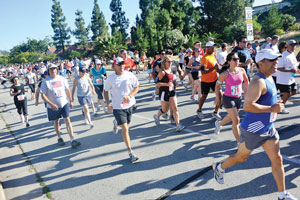Here in Santa Clara County, more than half the water we use is “imported,” meaning it’s conveyed to us from other parts of the state.
Most of that water starts out as snow in the Sierra Nevada. When it melts, it makes its way into large reservoirs like lakes Oroville and Shasta.
From these reservoirs, the water flows in rivers to the Sacramento-San Joaquin Delta where it is then conveyed through state and federally run infrastructure known as the State Water Project and Central Valley Project to us and other southern, central and coastal parts of the state.
That close to half the water we use in Santa Clara County comes through the Delta means the health of the Delta is extremely important to us and should be a concern to everyone. But the Delta is quavering under pressure from aging levees, sea level rise and human and environmental demands. So we have been working with other water agencies, state and federal agencies, and other stakeholders to evaluate options.
There have been a number of plans throughout the years to improve the health of the Delta and to try to meet the demands of urban and agricultural users and the environment. The latest is a pair of proposals by the state, called California WaterFix and California EcoRestore. The WaterFix plan aims to change the way water moves south through the Delta in an effort to safeguard drinking water and improve water flows for the environment. The EcoRestore plan aims to restore at least 30,000 acres of habitat by 2020 to benefit the Delta environment.
The Santa Clara Valley Water District Board of Directors is poised to make a decision on whether to support the WaterFix plan and whether to participate in it sometime this year. But before we can do that, we want to be sure we—and the public—fully understand it.
That’s why we held a special workshop Jan. 26, where we invited representatives from the state Department of Water Resources, the California Natural Resources Agency and the state Department of Fish and Wildlife to present more information on this plan for the Delta. If you missed it, our board meetings are webcast and archived online for later viewing.
Board members asked a number of questions, ranging from cost to governance to environmental impact, and we also heard from members of the community who voiced concerns and asked questions. This is an important part of the process, and we have more workshops and committee meetings planned to learn much more about this proposal and what benefits or challenges it could pose to our county, as well as how much it would cost to participate. These workshops and meetings are open to the public, and we invite you to attend so you too can learn more and provide input. The state of our water concerns everybody.
Our next discussion of the plan is scheduled for a Feb. 22 meeting of our BDCP Ad Hoc Committee. Check back at valleywater.org for final dates and times. You can submit feedback to bo***@*********er.org.
John Varela is Vice Chairman and District 1 Director of the Board of Directors for the Santa Clara Valley Water District. For further information, contact Varela jv*****@*********er.org.








